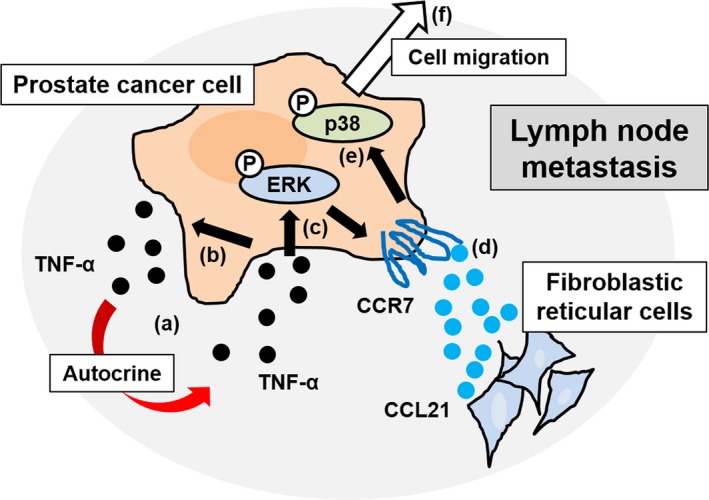Figure 6.

Schematic illustration of the mechanism of prostate cancer cell migration within the microenvironment of lymph node metastasis. (a), Tumor necrosis factor‐α (TNF‐α) is secreted from prostate cancer cells. (b), Low‐dose TNF‐α induces TNF‐α in an autocrine manner. (c), Low‐dose TNF‐α also induces the phosphorylation of ERK. (d), Phosphorylation of ERK increases C‐C chemokine receptor 7 (CCR7) expression. Given the abundance of C‐C chemokine ligand 21 (CCL21), the ligand for CCR7, in the microenvironment of lymph node metastasis, the CCL21/CCR7 signaling pathway is activated. (e), CCL21/CCR7 signaling subsequently induces the phosphorylation (P) of p38. (f), Phosphorylated p38 is a key molecule for prostate cancer cell migration within the microenvironment of lymph node metastasis. This mechanism could account for multiple lymph node metastases, from sentinel to more centrally located lymph nodes
